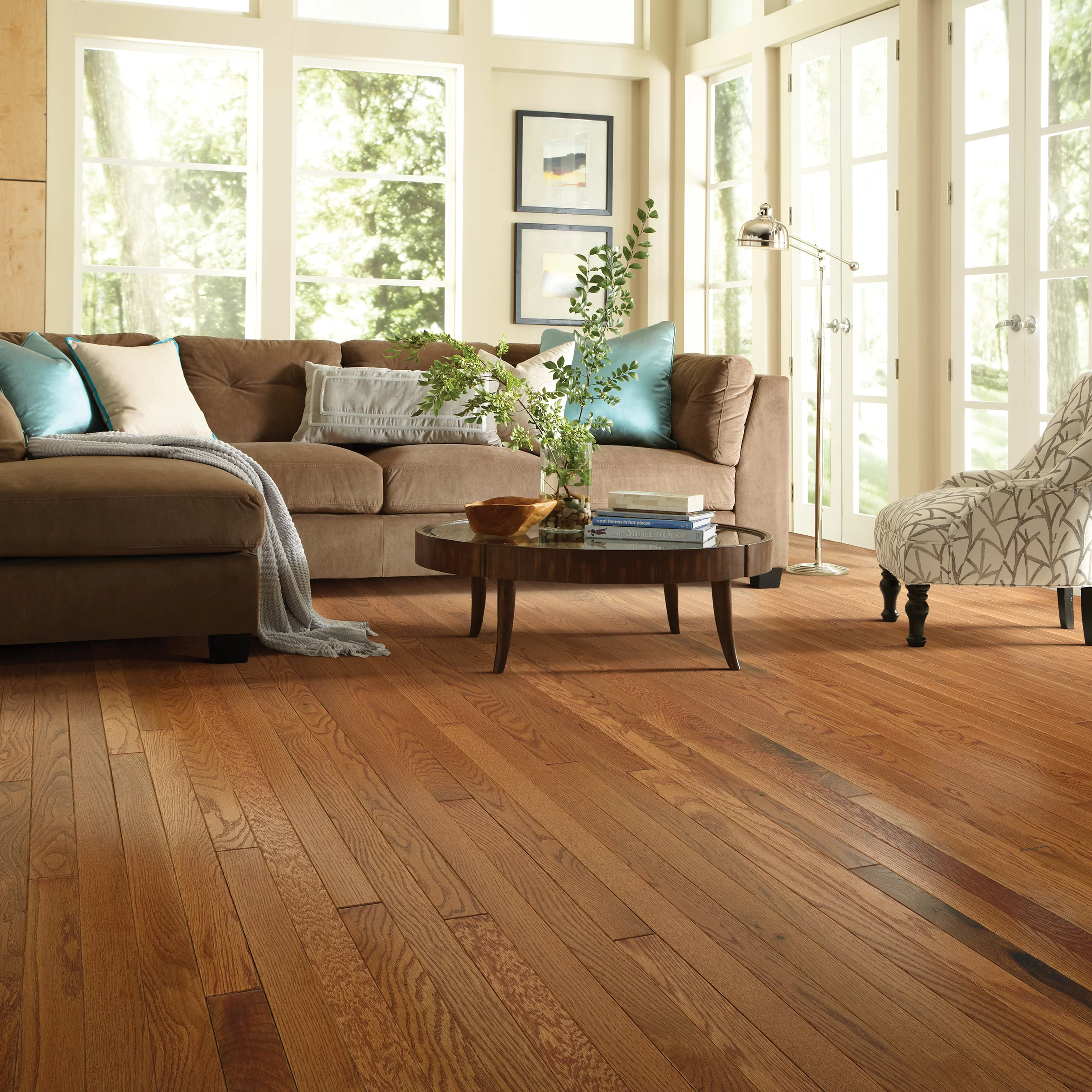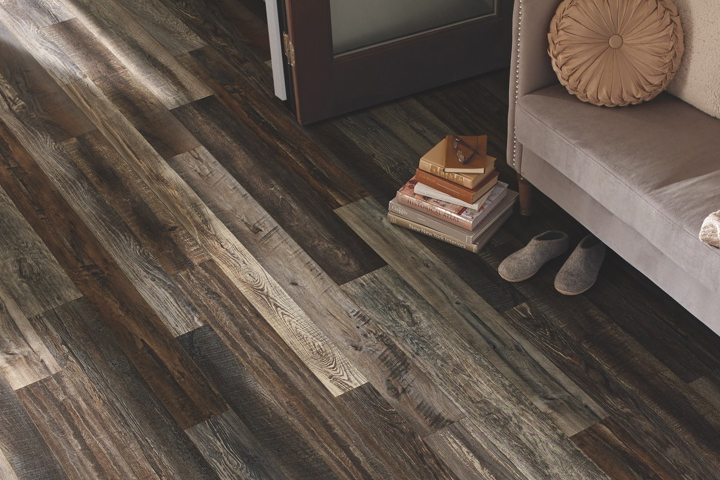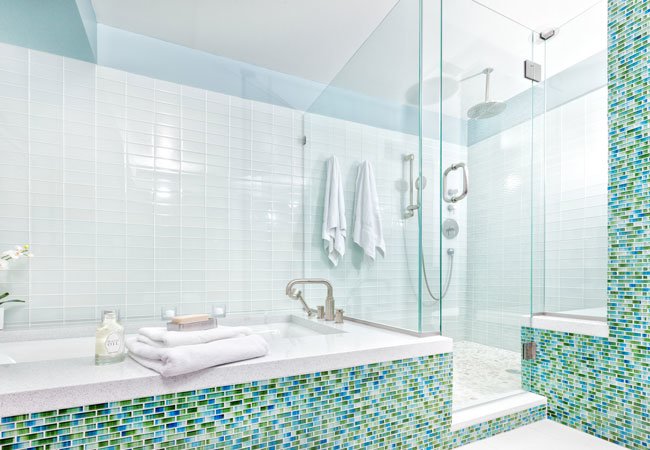
Material and structure: It is all natural very hardwood in shape of 5/8 or 3/4-inch thick planks. The width of the planks ranges from 2 to 10 inch. In the recent decade, the trend has shifted from narrower 2-3 inch planks to 5-8, or even 10-inch planks. The most common hardwood floors are made from oak, maple, and cherry. But it might also be made of walnut, ash, mahogany, teak, Jarrah, and mesquite. Solid hardwood planks are simply made of one-piece very hard wood.
Finishing texture: The texture of the wood you feel under your feet can also be different. It can be smooth, open grain, hand-scraped, distressed or wire-brushed.
Smooth: While in recent years, hand-scraped and open grain hardwoods have gained more popularity, still the simple smooth classic hardwood is the most common and popular.
Open-grain: Some types of woods like oak, elm, and hickory have large readily-visible pores in their natural texture. So, when they turn into hardwood flooring planks, these pores create a nice unique pattern on the planks.
Hand-scraped: Hand-scraped or hand-sculptured hardwood flooring is the most recent trend and in our opinion, it really is something special. The planks are scratched, usually in a random way, to give a rustic, aged unique look to the wood.
Distressed: it is basically the same as the hand-scraped. The only difference is that it is indeed distressed by machine, not a human being! It still looks nice, but usually costs less.
Wire-brushed: Wire-brushed or etched hardwood is also a trendy choice these days. While the finish is still soft and smooth, the surface is brushed with steel bristles. This process leaves a beautiful subtle texture on the surface.
*ATTENTION*: the surface texture of hand-scraped, distressed, or wire-brushed hardwood planks may become less visible or vanish completely if sanded.
Durability: hardwood floors, in general, are prone to scratches and dents. However, the level of surface wear depends on wood species and type of finishing. But keep in mind that since it is 100% natural wood, if kept away from humidity, its lifespan can easily exceed 50 years. It can be sanded and refurbished many times during its life cycle.
Installation: most hardwood planks have tongue-and-groove edges which makes jointing and leveling much easier. Keep in mind that hardwood floor cannot be installed directly on cement or concrete. So, usually a ¾ inch plywood sub-floor should be installed first on the cement and then the hardwood planks will be nailed or stapled down to the sub-floor.
*ATTENTION*: no glue!
Limitations: hardwood floors cannot be installed over a radiant heated sub-floor. Plus, moisturize their enemy, so they better not be used in basements or wherever there is a drain.
Cost: cost per sqft is usually between 3$ to 10$. You probably should pay around 5$ to 6$ for something decent, unless you find a good deal on sale!


